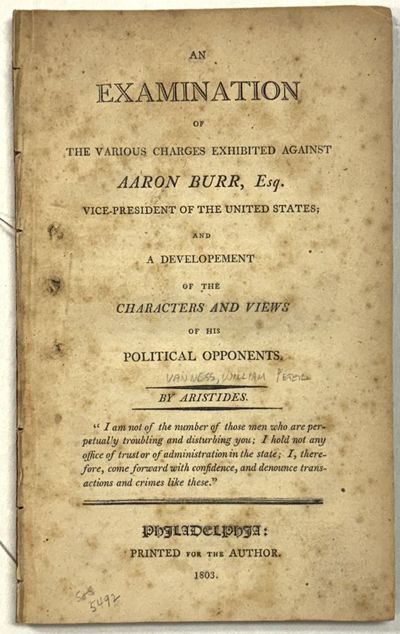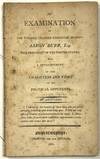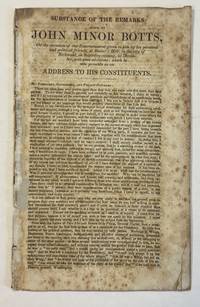1803 · Philadelphia
by [Van Ness, William]
Philadelphia: Printed for the Author, 1803. 77, [1 blank] pp. Disbound, lightly foxed, Good+.
This and a New York edition were printed in 1803. There are two states of the Philadelphia 1803: this one begins page 4 with 'terest'; the other begins, 'Ready.' Other printings followed in 1804.
Van Ness attempts to rebut the charges, which were doubtless true, that President Jefferson had repudiated Vice President Burr "and denounced him." Van Ness argues that Burr is best able to end the notorious factionalism of New York politics by defeating the Livingston and Clinton influence. The attacks of the Clinton faction of New York's Republican (truncated)
This and a New York edition were printed in 1803. There are two states of the Philadelphia 1803: this one begins page 4 with 'terest'; the other begins, 'Ready.' Other printings followed in 1804.
Van Ness attempts to rebut the charges, which were doubtless true, that President Jefferson had repudiated Vice President Burr "and denounced him." Van Ness argues that Burr is best able to end the notorious factionalism of New York politics by defeating the Livingston and Clinton influence. The attacks of the Clinton faction of New York's Republican (truncated)




